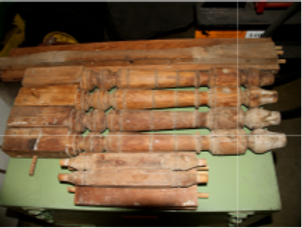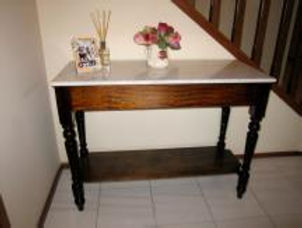Victoria Point, Queensland
Celebrating thoughtful craftsmanship and the artistry of woodworking while honouring our connection to nature.
Refinish, Restore or Conserve?
Aunt Joyce finally decided to give you that old dining room set you always loved, but countless family get-togethers have taken their toll. Or maybe you spotted a great antique desk at a secondhand store, and its worn-out, scratched finish has you thinking twice. There are many reasons for refinishing a piece of furniture. Whatever they are, there's no doubt refinishing or restoration can be an environmentally friendly and economical way to give older tables, chairs, chests and sideboards a new lease on life. But before you dive headlong into starting a refinishing project, you'll want to consider what type of refinishing needs to be done. For example, the chemicals and oils used to finish 18th- and 19th-century furniture aren't used much today and stripping away an original finish will not only diminish value but replacing it with a new finish will result in furniture that looks more like an antique reproduction than an antique.
Determining whether or not a piece is worth improving goes hand-in-hand with the type of work that needs to be done. There are three categories of work that can be done to rejuvenate old furniture: refinishing, restoration and conservation.
Conservation involves the preservation of original material in its current condition. The primary goal is to stabilise the piece and preserve the finish, surface, structure and design. If you have a piece of furniture where the joints are damaged — for example, a tenon is in pieces, or a dovetail is split — that threatens the stability of the object, and you have to rebuild the joint in the original manner.
Restoration takes conservation a step farther, includes repair and re-manufacturing of broken pieces, veneers and carvings, and is typically reserved for quality antiques or family heirlooms with a monetary or sentimental value that would be improved by the work. A good restoration, adds new material to an object to make it complete and as close to its original condition as intended by the maker. New parts are made by studying what remains of the original object and copying the original measurements and tool techniques to match the character of the original object. Conservation and restoration both seek to maintain the original finish.
Refinishing offers both repairs and restoration for a piece of furniture. Restoring an original finish involves cleaning and renewing it to take away water stains or surface scuffs but won't take the finish off down to bare wood. For 20th-century furniture, or older pieces that were refinished within the last 75 years, refinishing is probably the way to go. Twentieth-century finishes like lacquer and polyurethane are not renewable; those finishes will degrade and will need to be refinished. Refinishing involves stripping away the existing finish, preparing the bare wood, staining the piece, if desired, and adding several layers of new finish.
For antiques, it is a treatment of last resort because not only are you adding a new finish, you will not be able to preserve any of the finish that was there before. You're also destroying the patina, texture and appearance of the old wood, and those elements are very valuable and impossible to recover. For newer furniture, however, refinishing is a great way to get good furniture for much less than it would cost to buy similar quality new. Generally speaking, refinishing older furniture can be done for one-third the cost of buying new, and what you are going to get is a much better-built piece of furniture, constructed with better wood, with great details like inlays. Restoring an existing antique finish can sometimes be even less expensive than refinishing, with the added bonus of preserving the market value of the antique. Sometimes, even if a piece isn't of great antique value, but of good quality and of sentimental value, you might consider an improved finish with something like a French polish that is renewable and easier to maintain in the future.
Especially if Aunt Joyce is now expecting you to host the holiday gatherings.


From this..... to this
















